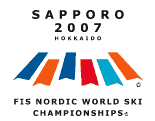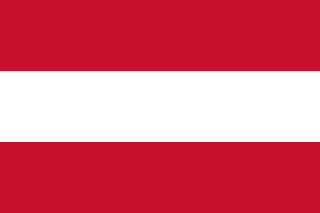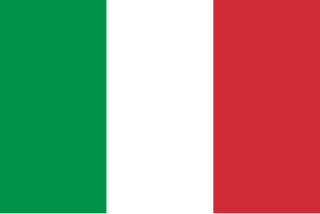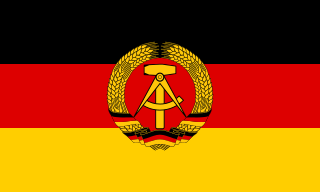The 1972 Winter Olympics, officially the XI Olympic Winter Games [dai dʑɯitɕi-kai oɾinpikɯ tokikʲogi taikai] and commonly known as Sapporo 1972, were a winter multi-sport event held from February 3 to 13, 1972, in Sapporo, Hokkaido Prefecture, Japan. It was the first Winter Olympic Games to take place outside Europe and North America.

Simon Ammann is a Swiss ski jumper. He is one of the most successful athletes in the history of the sport, having won four individual Winter Olympic gold medals in 2002 and 2010. His other achievements include winning the 2007 Ski Jumping World Championships, the 2010 Ski Flying World Championships, the 2010 Nordic Tournament, and the 2010 Ski Jumping World Cup overall title.
The 1972 Winter Olympics, officially known as the XI Olympic Winter Games, was a winter multi-sport event held in Sapporo, Japan, from 3 to 13 February 1972. A total of 1,006 athletes representing 35 National Olympic Committees (NOCs) participated in 35 events from 10 different sports and disciplines.
Nordic combined at the 1972 Winter Olympics consisted of one event, held from 4 February to 5 February. The ski jumping portion took place at Miyanomori Ski Jump Stadium, while the cross-country portion took place at Makomanai Park.
Ski jumping at the 1972 Winter Olympics consisted of two events held from 6 to 11 February 1972, with the large hill event taking place at Okurayama Ski Jump Stadium, and the normal hill event at Miyanomori Ski Jump Stadium.

Kazuyoshi Funaki is a Japanese former ski jumper. He ranked among the most successful sportsmen of its discipline, particularly in the 1990s. Funaki is known for his special variant of the V-style, in which the body lies flatter between the skis than usual.
Masahiko Harada is a Japanese former ski jumper. He is best remembered for a meltdown at the 1994 Winter Olympics in Lillehammer, which cost the Japanese national team a victory, and his subsequent redemption at the 1998 Winter Olympics in Nagano; the latter of which led to him being affectionately called "Happy Harada".

Noriaki Kasai is a Japanese ski jumper. His career achievements include a gold medal at the 1992 Ski Flying World Championships, winning the 1999 Nordic Tournament, individual silver medal at the 2014 Winter Olympics, and two individual bronze medals at the 2003 Ski Jumping World Championships.

Japan was the host nation for the 1998 Winter Olympics in Nagano. It was the second time that Japan has hosted the Winter Games, after the 1972 Winter Olympics in Sapporo, and the third time overall, after the 1964 Summer Olympics in Tokyo.

The FIS Nordic World Ski Championships 2007 took place 22 February – 4 March 2007 in Sapporo, Japan. It was the second time this city has hosted these championships, having previously done so in the 1972 Winter Olympics. Sapporo was selected as venue by vote at the 43rd FIS World Congress in Portorož, Slovenia, on 6 June 2002. It also marked the third time the championships were hosted outside Europe in a year that did not coincide with the Winter Olympics; it was the first championship held in Asia. The ski jumping team normal hill event was not held, as it had been in 2005.

The Soviet Union (USSR) competed at the 1972 Winter Olympics in Sapporo, Japan.

France competed at the 1972 Winter Olympics in Sapporo, Japan.

Austria competed at the 1972 Winter Olympics in Sapporo, Japan.

Italy competed at the 1972 Winter Olympics in Sapporo, Japan.

East Germany competed at the 1972 Winter Olympics in Sapporo, Japan.

Japan was the host nation for the 1972 Winter Olympics in Sapporo. It was the first time that Japan had hosted the Winter Olympic Games, but second time overall after the 1964 Summer Olympics in Tokyo. It was also the first Winter Olympic Games held in Asia. The host nation sent 90 athletes, consisting of 70 men and 20 women, along with 20 officers. The flag bearer for the Japanese team, Mineyuki Mashiko did not participate in the game, but instead held the position of team manager.

Japan competed at the 1992 Winter Olympics in Albertville, France, from February 8 to February 23, 1992. As many as 63 athletes competed accompanied by 42 officers. Japanese athletes compete in all disciplines except ice hockey.
For the 1972 Winter Olympics in Sapporo, Japan, a total of twelve sports venues were used. A thirteenth venue which was a reserved luge course was constructed, but never used in actual competition. Construction on all of the venues used took place between 1968 and early 1971 in time for the test events. The Tsuskisamu Indoor Skating Rink was not completed until late 1971 or early 1972 because the number of teams scheduled to compete at the 1972 Games was not known. At the actual luge venue used, a malfunctioning starting gate during the first run led to the results being cancelled and rerun being ordered. The results of this event led to the only tie in Olympic luge history. The ski jumps at Miyanomori and Okurayama served as host venues for the FIS Nordic World Ski Championships thirty-five years later.

For the 1998 Winter Olympics in Nagano, Japan, a total of fifteen sports venues were used. Nagano had attempted twice to host the Winter Olympics, losing out to Sapporo, host of the 1972 Winter Olympics. The third time, in 1991, Nagano edged out Salt Lake City to host the 1998 Games. The biathlon venue was adjusted in accordance with the Washington Convention over endangered species. The biggest venue controversy was at Happo'one resort on the length of the men's downhill and the battle that ensued to the point where skiing officials threatened to pull the event entirely before a compromise was reached three months before the Olympics. M-Wave has hosted three World Speed Skating Championships since the Olympics, while the Spiral has hosted a couple of world championships in bobsleigh, luge and skeleton.
The men's large hill individual ski jumping competition for the 1972 Winter Olympics was held in Okurayama Ski Jump Stadium. It occurred on 11 February.












